Wyoming Garden Ideas: Transform Your Outdoor Space
Gardening in Wyoming comes with its own set of challenges and rewards due to the state’s unique climate. Whether you are a seasoned gardener or just starting out, understanding the best practices for this region can lead to a thriving and beautiful outdoor space. From selecting hardy plants to designing attractive layouts, there is plenty to explore when it comes to creating your ideal garden in Wyoming.
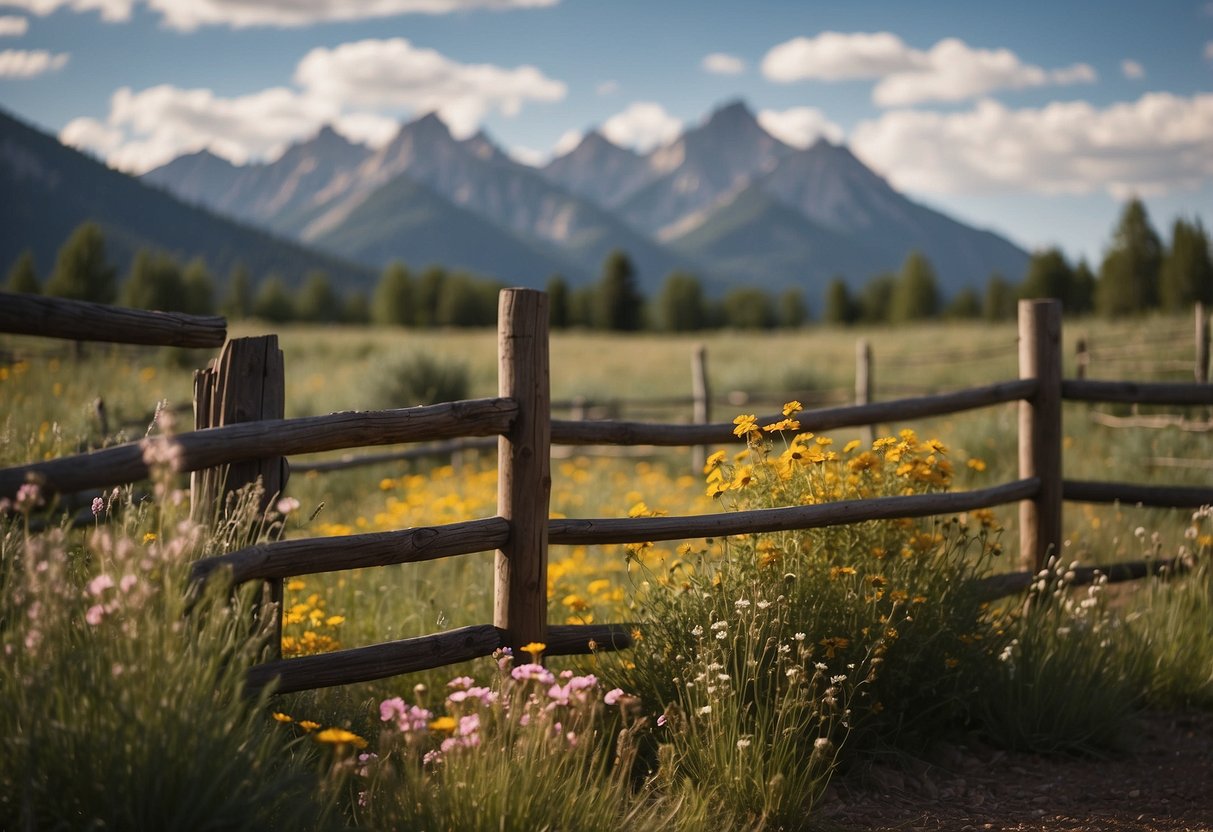
Wyoming’s high elevation, cold winters, and short growing season can make gardening seem daunting. Yet, with the right knowledge and approach, you can create a sustainable and stunning garden that flourishes. This article will provide you with inspiring ideas and tips to make your Wyoming garden a verdant haven.
1) Raised Bed Vegetable Garden
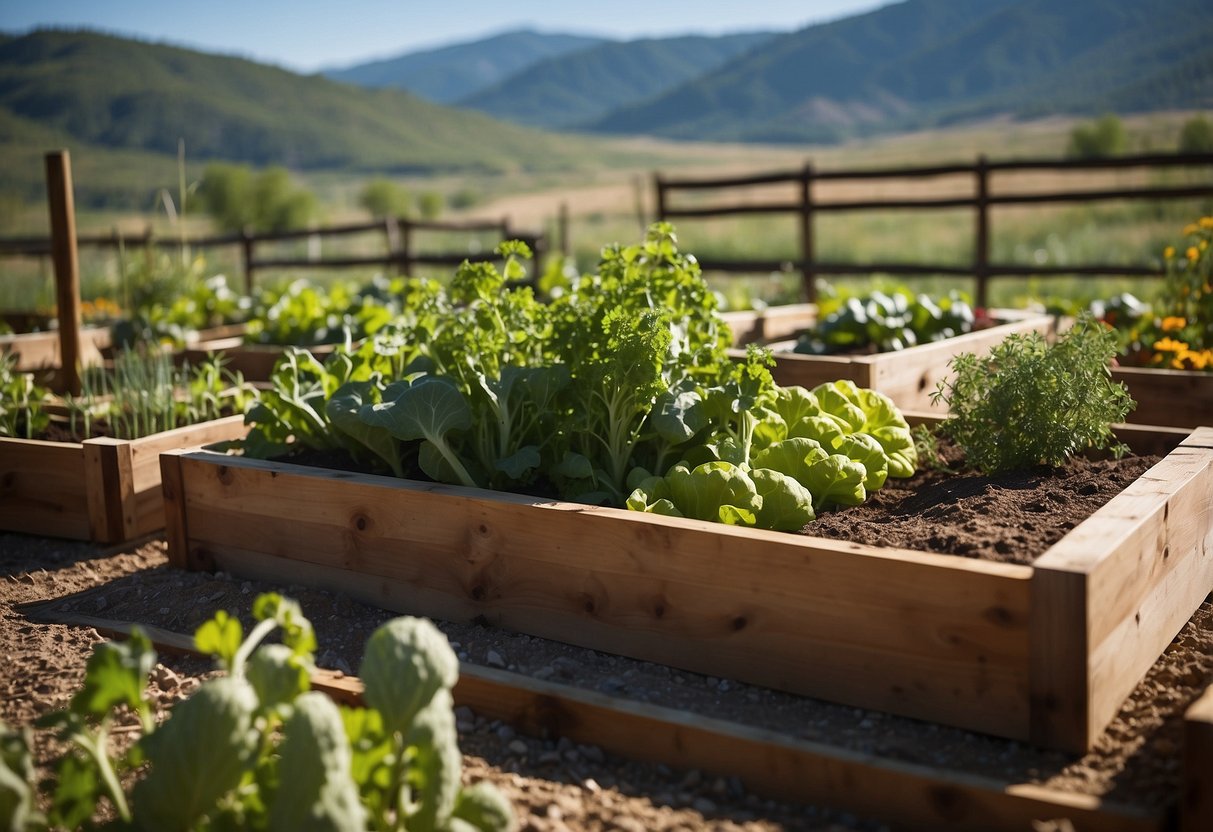
Raised bed vegetable gardens are perfect for Wyoming’s climate. They warm up faster in the spring and extend the growing season.
You can plant a mix of vegetables like tomatoes, peppers, and peas. Organizing your garden into rows can help manage your plants better.
Consider a 4×8 raised bed layout to maximize your space.
Rock Garden with Native Plants
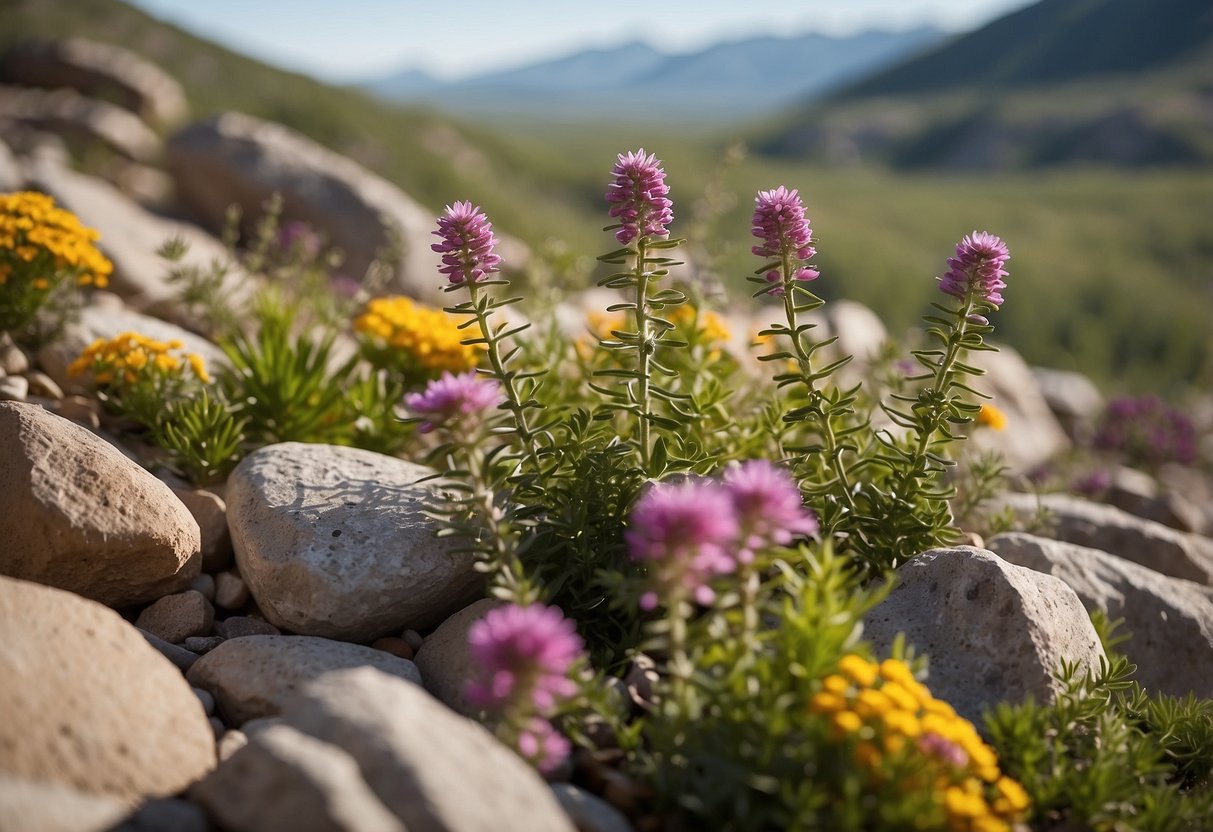
A rock garden can add charm and beauty to your yard. In Wyoming, you can choose native plants that thrive in rocky soil and cool climates.
Pink-flowered swamp milkweed is a great option. Its bright blooms attract butterflies. Columbian monkshood, with its blue or violet hood-like flowers, adds vibrant color to the garden.
Using native plants in your rock garden helps support local wildlife and requires less water once established. For ideas on other native plants, visit the Wyoming Native Plant Society.
3) Water Feature with Wyoming Stones
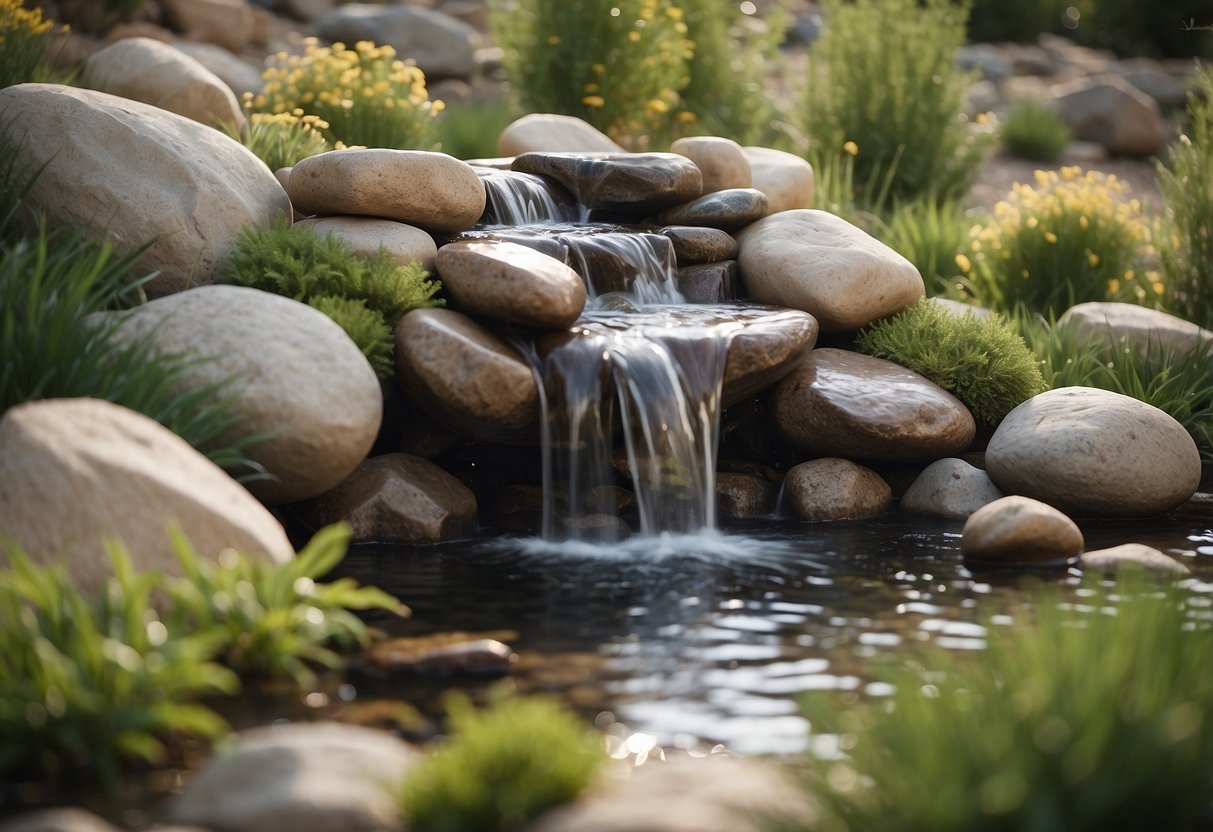
Adding a water feature with Wyoming stones can create a beautiful focal point in your garden.
Wyoming has a variety of native stones that add a natural look to your water feature. You might consider using river rocks or sandstone for a rustic feel.
Combine these stones with a small pond or fountain to enhance the tranquil atmosphere. For more inspiration, check out these water feature ideas.
Using local stones not only looks great but also supports sustainability. Your garden will blend seamlessly with the natural Wyoming landscape.
4) Herb Garden in Vintage Containers
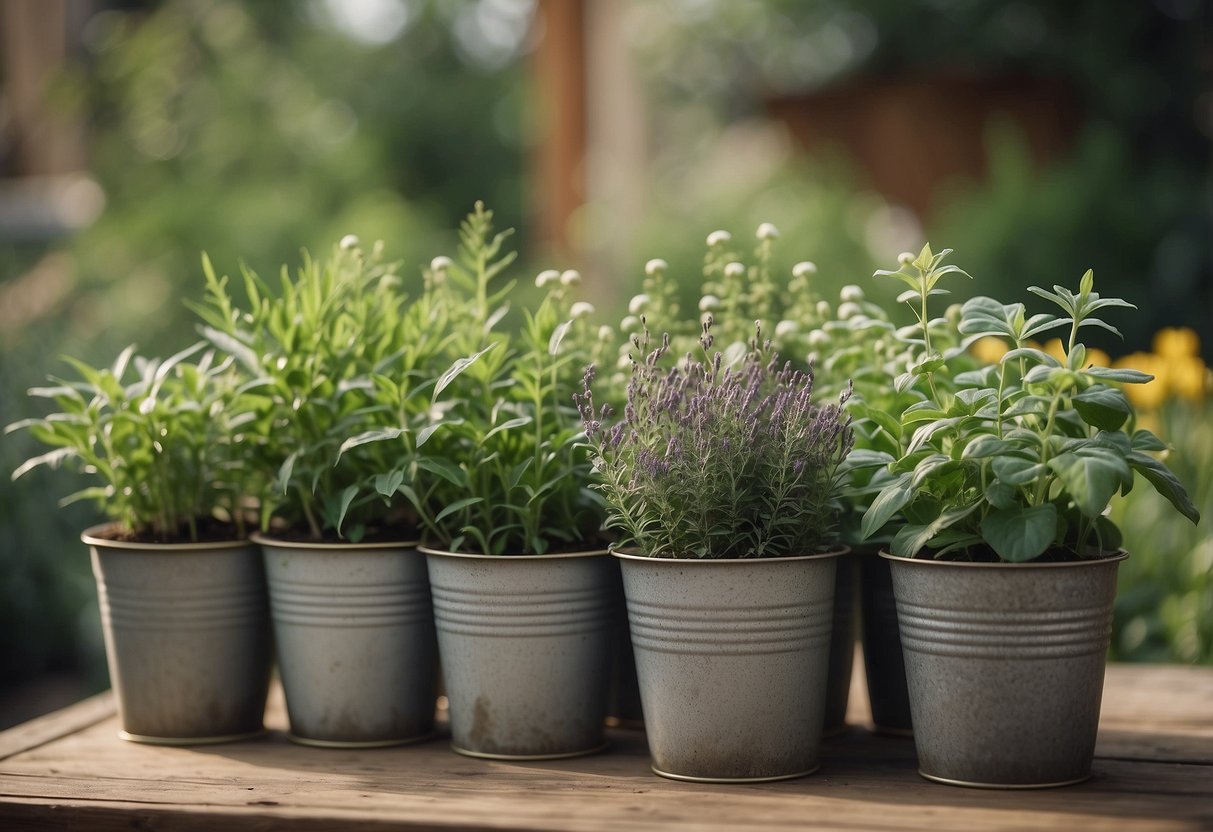
Using vintage containers for your herb garden adds charm and character to your Wyoming backyard. Old teapots, birdcages, and tin cans can be repurposed creatively.
For example, birdcages provide structure and can help keep pests away. Your plants will grow through the cage, creating a beautiful display.
Teapots and tin cans make excellent pots for herbs like basil, parsley, and mint. Just ensure you add drainage holes at the bottom. Enjoy combining utility and vintage aesthetics for a lovely herb garden.
5) Wildflower Meadow

Creating a wildflower meadow in your Wyoming garden can attract beneficial pollinators. These meadows are filled with diverse plants like tickseed, black-eyed Susan, and butterfly weed.
Mixing in wild grasses adds texture and support for the flowers. Even small spaces can be transformed into a colorful, natural area. A wildflower meadow can give your garden a vibrant, rustic charm.
For more ideas, explore wildflower garden inspirations.
6) DIY Garden Path
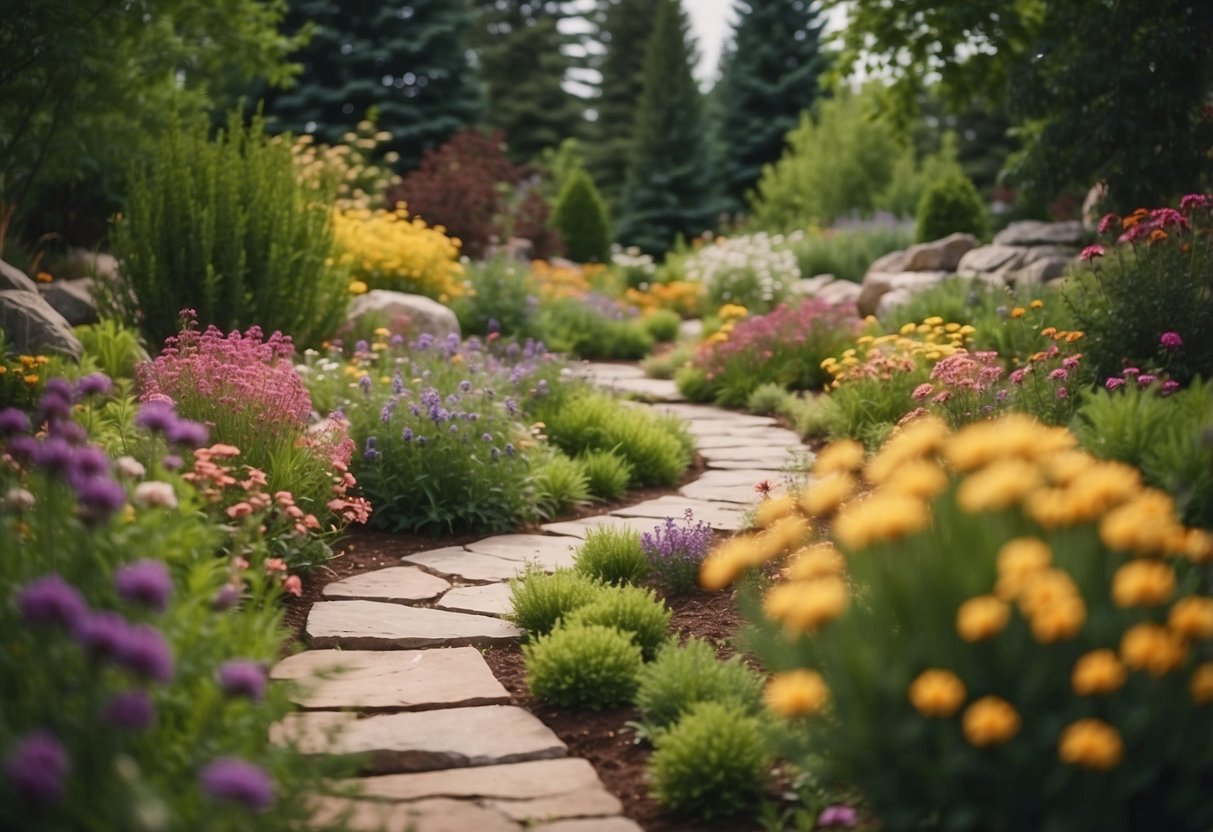
Creating a DIY garden path can transform your Wyoming garden into a beautiful, welcoming space. One easy method is using classic stepping stones made from natural rocks, concrete pavers, or wood.
For a more rustic look, consider a flagstone and mulch path. This combination is affordable and adds charm.
If you’re short on time, a simple gravel path can be completed in just a few hours. Just dig down a bit, add landscape fabric, and fill it with gravel.
7) Hummingbird-Friendly Flower Bed
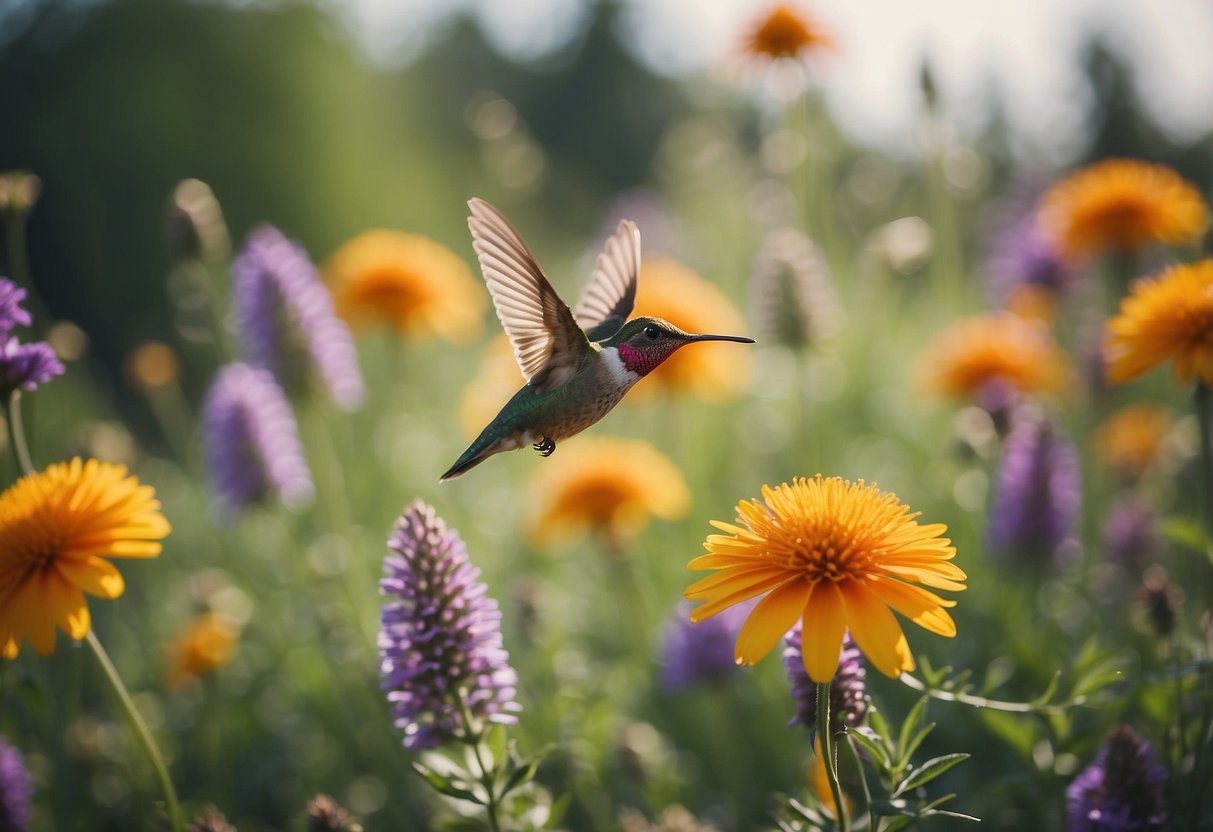
Your garden can become a favorite spot for hummingbirds. Choose flowers that are rich in nectar and vibrant in color.
Larkspur, with its large blue flowers, is a great option but remember it’s toxic to humans and animals. Make sure to keep it out of reach of children and pets.
Penstemon, also known as Beardtongue, is native to Wyoming and has a tubular shape. This makes it perfect for attracting hummingbirds.
Creating vertical spaces with trellises can add even more flower options. Try planting climbing vines for more places for hummingbirds to visit.
8) Rustic Garden Furniture
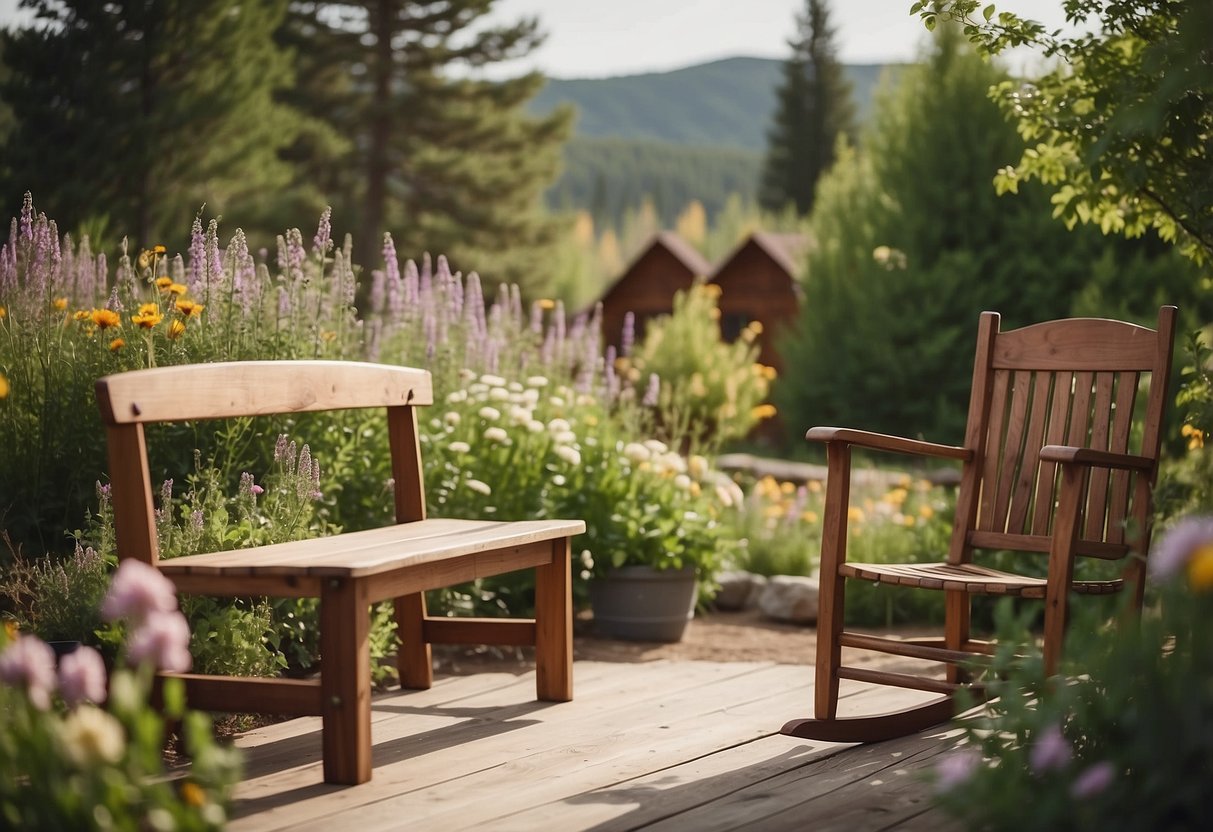
Rustic garden furniture adds charm and warmth to your outdoor space. Look for pieces made from natural materials like wood, wicker, or rattan. These materials blend seamlessly with the natural surroundings.
Weathered finishes give furniture a relaxed, lived-in look. Comfortable cushions in earthy tones add coziness. For more ideas, visit SharonSable.
Vintage finds like old wooden benches or stone jars can also enhance the rustic feel. Enhance your garden by adding these timeless pieces.
9) Terraced Hillside Garden
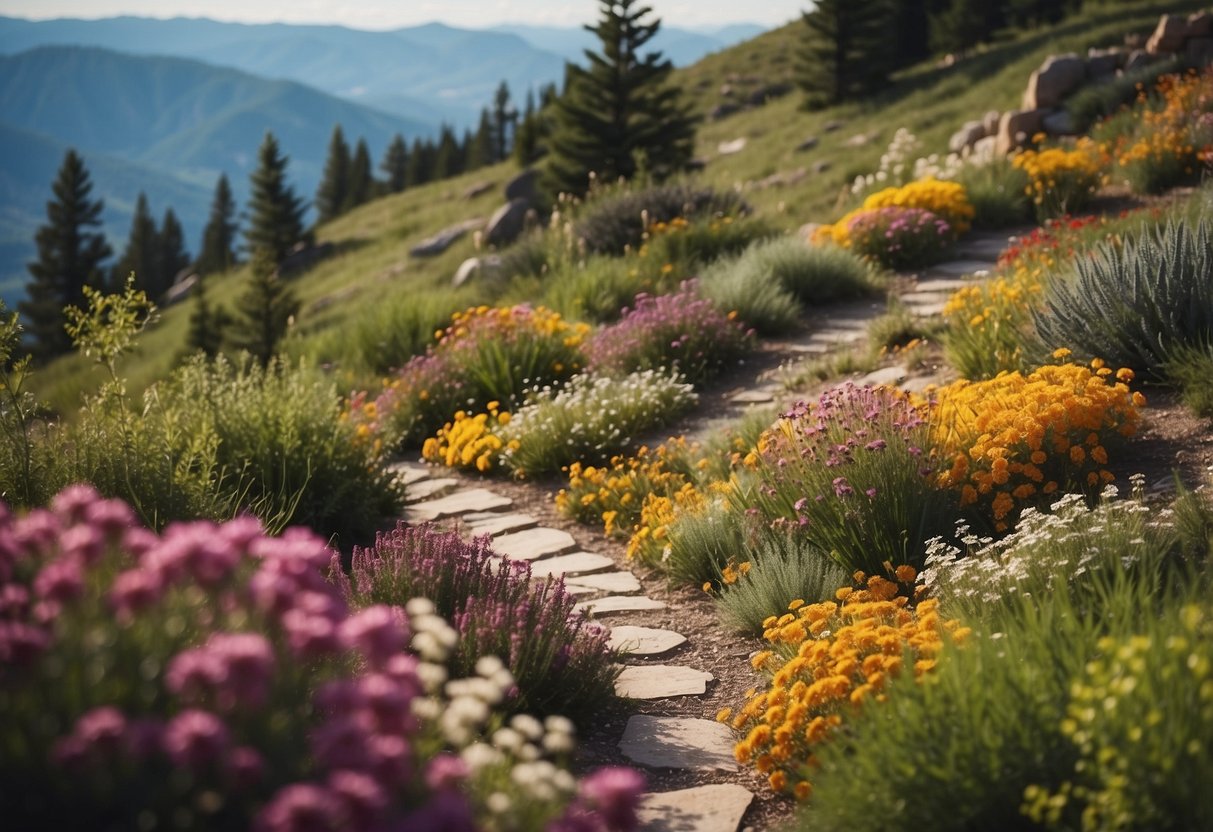
A terraced hillside garden can transform your sloped yard into a beautiful, usable space. By creating stepped levels, you can prevent soil erosion and make planting easier.
Terraces provide flat areas for planting, allowing for a variety of flowers and vegetables to thrive. This approach also helps with water drainage and reduces runoff issues.
Consider adding a mix of colorful blooms and hardy shrubs to your terraces. Plants like sedum and creeping phlox work well on slopes. You can find more hillside garden ideas at Hello Hayley.
10) Succulent Container Garden
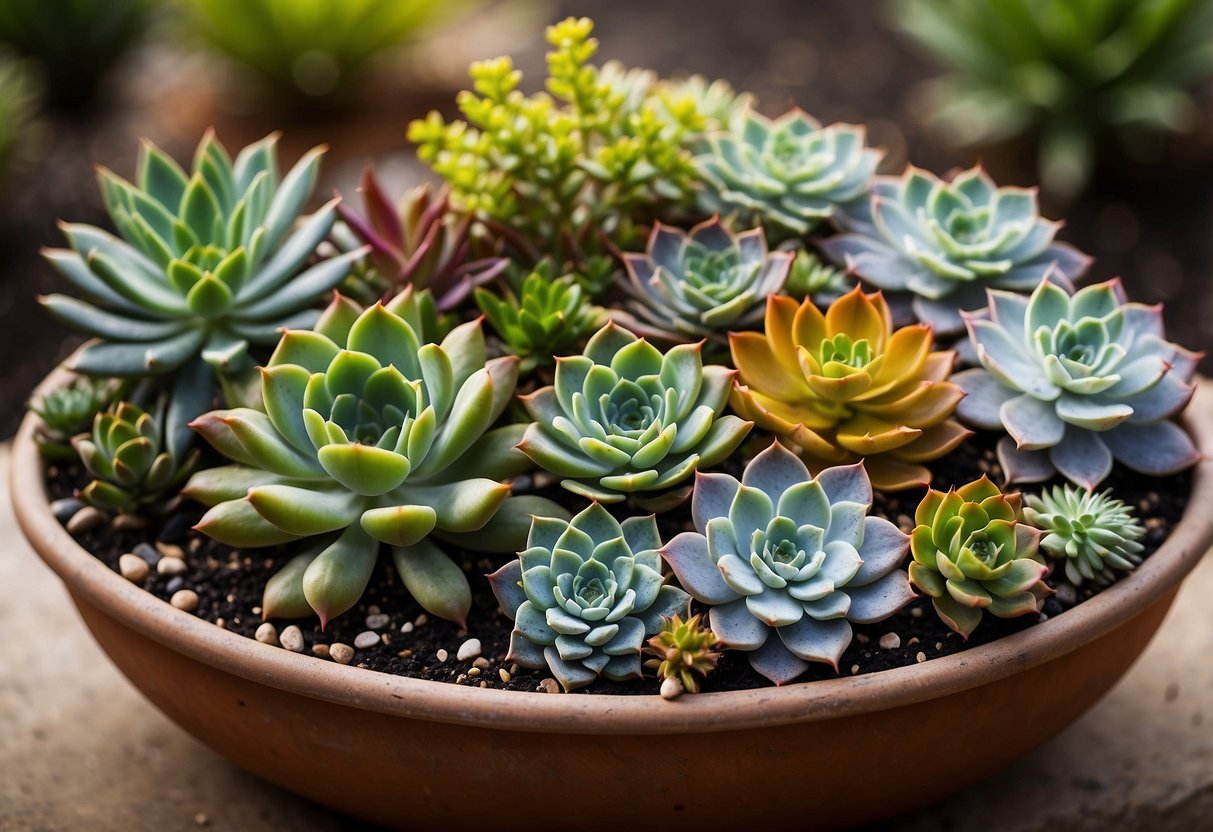
Creating a succulent container garden is a great idea for your Wyoming garden. Succulents are low-maintenance and thrive in dry climates.
Start with a well-draining container. Drill several holes in the bottom for good drainage. Fill it with a mix designed for cacti and succulents.
Mix different types of succulents for variety. Combine low-growing succulents with taller ones for contrast. This adds depth and interest.
You can even use unique containers like rain gutters for a creative touch.
Understanding Wyoming’s Climate
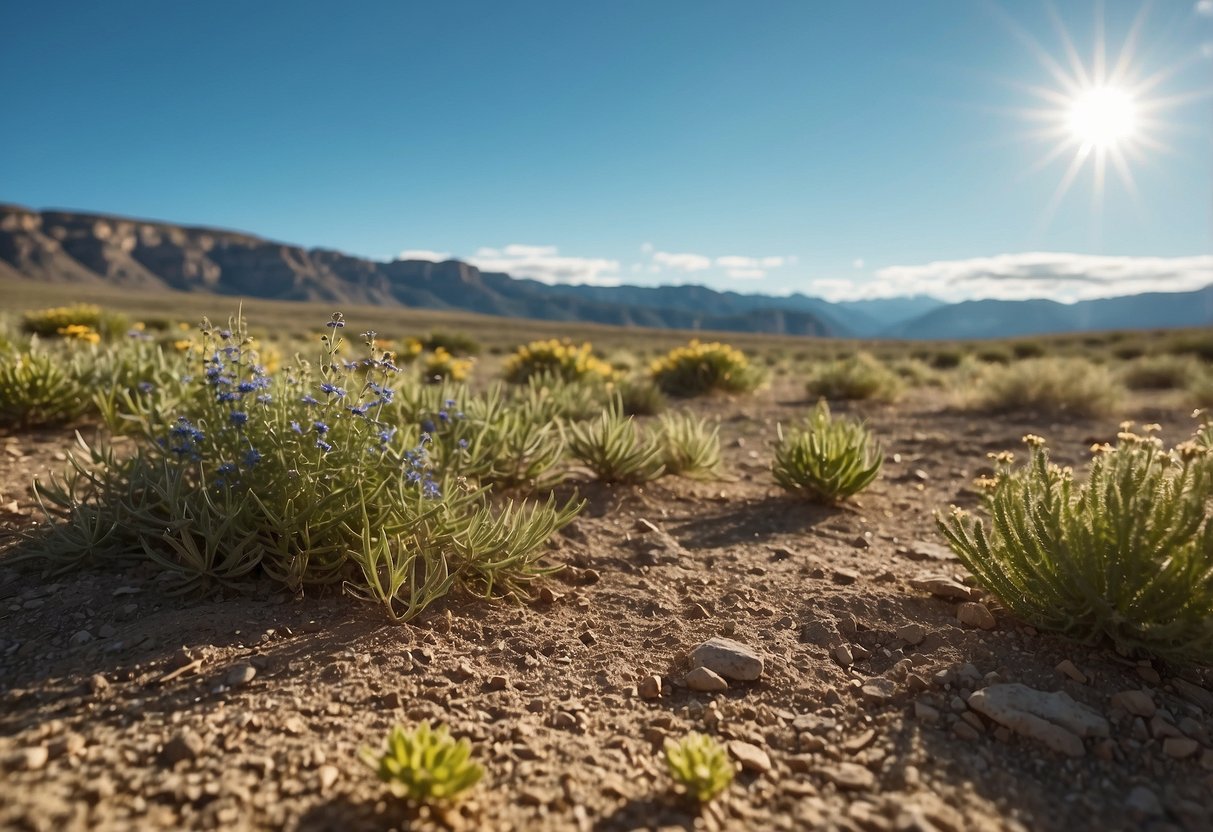
Wyoming’s climate can be challenging for gardeners. It features high elevations and harsh weather conditions that impact plant growth. Knowing the seasonal weather patterns and choosing plants that can withstand these conditions is essential.
Seasonal Weather Patterns
Wyoming experiences cold, long winters with temperatures often dropping below zero. Snowfall can be heavy, especially in mountainous areas. The short growing season starts in late spring and lasts through early fall. Summers are dry and warm with occasional thunderstorms. Wind is a constant factor, particularly in open areas.
To succeed, you must plan for early frosts and short growing periods. Planting in raised beds or using cloches can help protect your garden from unexpected temperature drops. Water management is also crucial; consider using mulches to retain moisture during dry spells.
Choosing Climate-Resilient Plants
Selecting the right plants for Wyoming’s climate is key. Native plants are typically well-suited for the local conditions. Some hardy choices include Rocky Mountain Penstemon, Blanket Flower, and Yellow Wild Indigo. Perennials that can survive harsh winters will save you time and effort.
Look for plants that are drought-resistant and can tolerate both cold and wind. Vegetables like kale, spinach, and carrots tend to do well. Additionally, using windbreaks like shrubs or garden structures can help protect more delicate plants. Make your garden thrive by picking the right species and giving them the care they need.
Soil Preparation Tips

Proper soil preparation is crucial for a thriving garden in Wyoming. You’ll need to test the soil quality and improve its fertility to ensure healthy plant growth.
Testing Soil Quality
Start by testing your soil to know its pH level and nutrient content. You can purchase a soil test kit from a garden store or send a sample to a local extension service.
A pH level between 6.0 and 7.0 is ideal for most vegetables. If the pH is too high or too low, it can affect nutrient availability.
Testing also shows nutrient deficiencies, like low nitrogen, phosphorus, or potassium. Armed with this information, you can add the right amendments to balance your soil.
Improving Soil Fertility
Improving soil fertility involves adding organic matter and other nutrients. Compost, well-rotted manure, or leaf mold are excellent choices. These organic materials add nutrients and improve soil texture.
Mix the organic matter into the top 12 to 14 inches of soil. This depth ensures that roots will access the nutrients.
You may need to add specific fertilizers based on your soil test results.
For example, if your soil lacks nitrogen, a high-nitrogen fertilizer will help. Always follow the recommended amounts to avoid over-fertilizing, which can harm plants.
Regularly adding organic matter and necessary fertilizers will keep your garden soil fertile and productive.
Designing Your Wyoming Garden
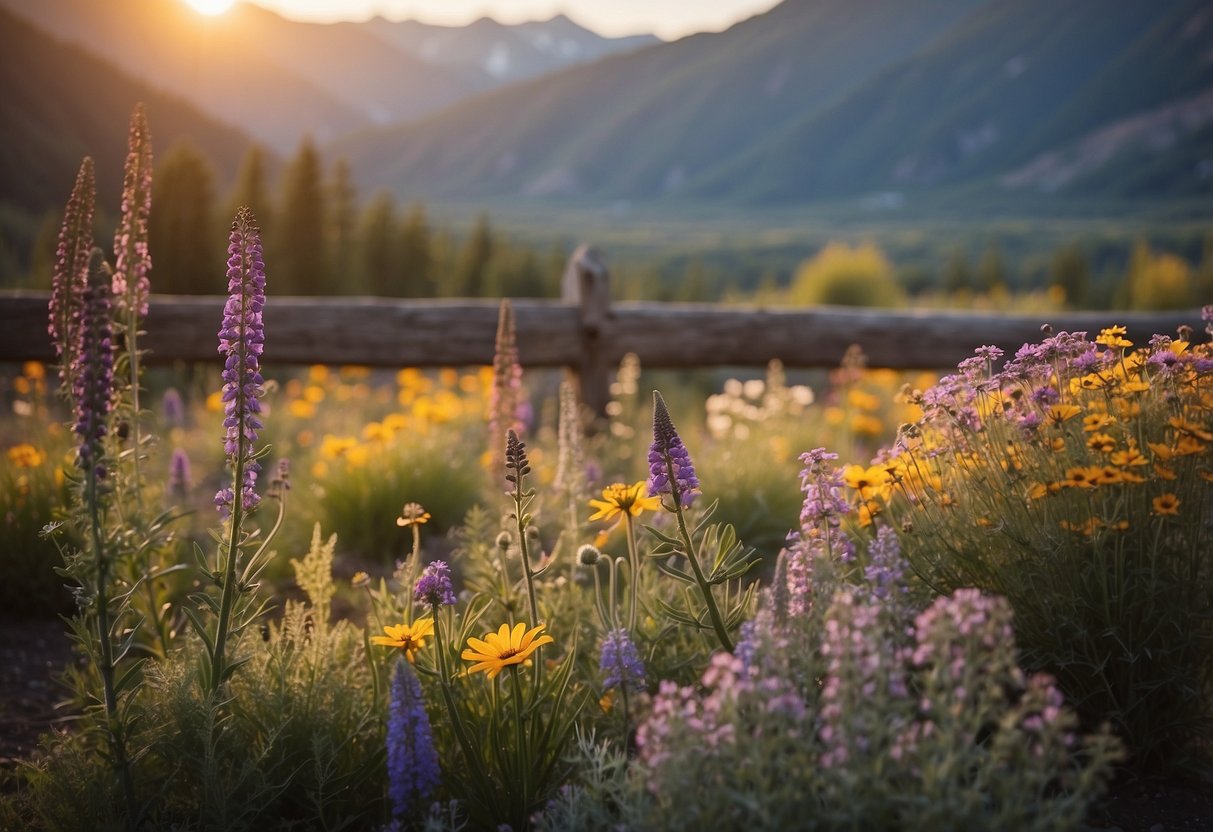
In Wyoming, creating a garden that thrives year-round involves choosing native plants, incorporating diverse elements, and adapting to the unique climate. Here’s how you can make your garden stunning and functional.
Creating Focal Points
Focal points draw attention and give structure to your garden. You can start with taller trees and shrubs in the background. Use mid-sized plants for the middle layer, then finish with low-growing ground covers or flowering plants upfront. This will add depth to your garden.
Water features like fountains or ponds can be great focal points. They add a soothing sound and attract wildlife. Statues or sculptures can also provide visual interest. Choose pieces that blend with your garden’s theme.
Paths and walkways are important too. They guide visitors through your garden and highlight different areas. Consider using materials like stone or gravel for a natural feel.
Incorporating Hardscape Elements
Hardscape elements such as patios, decks, and walls define spaces and add functionality to your garden. In Wyoming, stone and wood are popular choices because they blend well with the natural environment.
Retaining walls can help manage elevation changes and prevent soil erosion. They are practical and can be designed to match your garden’s style.
Fire pits offer warmth and a gathering place for cool evenings. They can be built using local stone for a rustic look.
Adding outdoor furniture like benches or dining sets makes your garden more usable. Choose weather-resistant materials to withstand Wyoming’s varied conditions.
Implementing these elements thoughtfully will enhance your garden’s beauty and usability throughout the year. Make sure each addition complements the natural landscape and your overall design vision.







